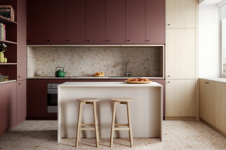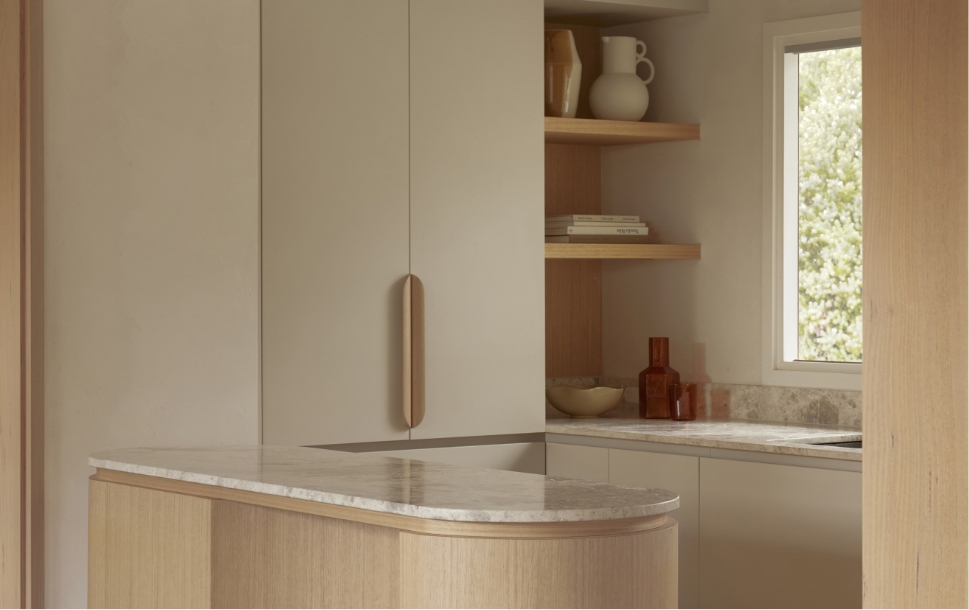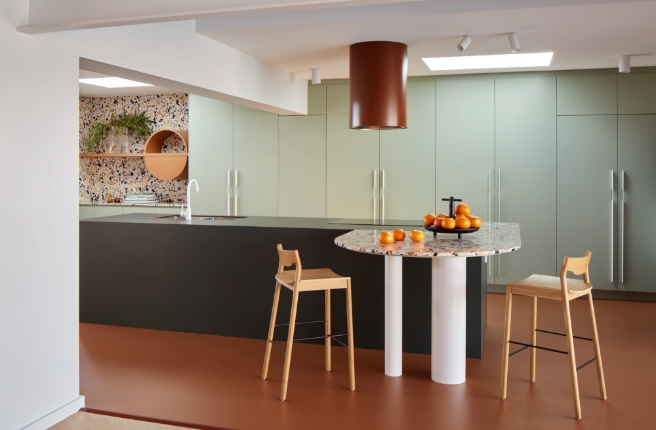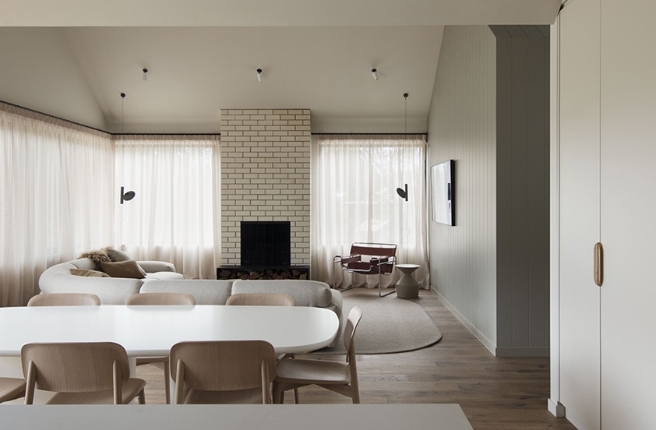Hiding in plain sight, an experimental, mid-century home is saved from the depths of the history books, bringing it back to the 21st century with its original charm still intact.
At the pointiest part of Victoria’s Mornington Peninsula, Portsea is probably more well known for the millionaires and expansive homes than flats built in an experimental, modernist style to solve a post-war housing crisis.
Portsea Surf Shack by Blair Smith Architecture is the antithesis of the prevailing ‘bigger is better’ way of thinking. This compact, two-bedroom heritage project displays the conservation of something that would, were it not for its owners, be lost to the sands of time.
From the outside, Harbour Gate Flats present traditionally. Pitched roofs, terracotta tiles and sash windows all belie the vision of original architect Bernard Evans & Sons, to create a system of prefabricated modular room units that would be placed together to create a home. Cast in plaster with curved ceilings, windows and doors incorporated, each ‘unit’ would be craned into place. Known as the Aychar system, all evidence of the process has since been demolished, with these homes at Portsea representing the last remaining examples of the ambitious, innovative and unusual solution to housing.
Inside Portsea Surf Shack, the curved ceilings and original plaster walls give the space an unexpected and wonderfully unique atmosphere, and without any hard edges, there is a softness and tactility that is rarely seen in modern construction. Smith’s use of a lime based, textural paint further enhances the sensory qualities, while also allowing the old plaster to breathe.
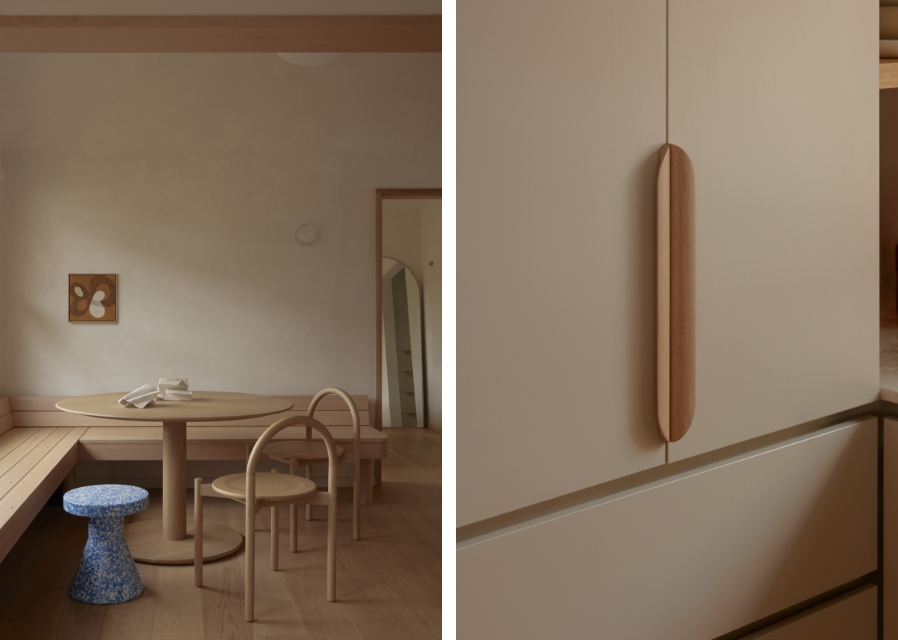

Rather than making overt references to boats or marine life, the kitchen bench uses limestone in a nod to Portsea’s history of quarrying and construction. While also looking like a fossilised beach scene, it’s a natural extension of the clients’ love of surfing, fishing and the beach. The palette is muted but full of life, avoiding seaside cliches and coastal kitsch, instead relying on a subtlety that fits the surrounding landscape and practical needs of the family.
Part of that practicality was to make room for a kitchen that was more than the holiday space it once was; somewhere a family could gather and prepare meals. A curved kitchen island encourages flow and movement while adhering to the smooth forms dictated by the original vaulted ceiling.
Timber is used extensively, on floorboards and cabinetry, and in doorways and thresholds that signal the move from one building module to the next. The beach box styling of the dining room seating is where a further connection to the home’s location is made. It’s fun and lively, but like the palette, avoids the trap of beachy platitudes, acknowledging it surroundings, without becoming pastiche.
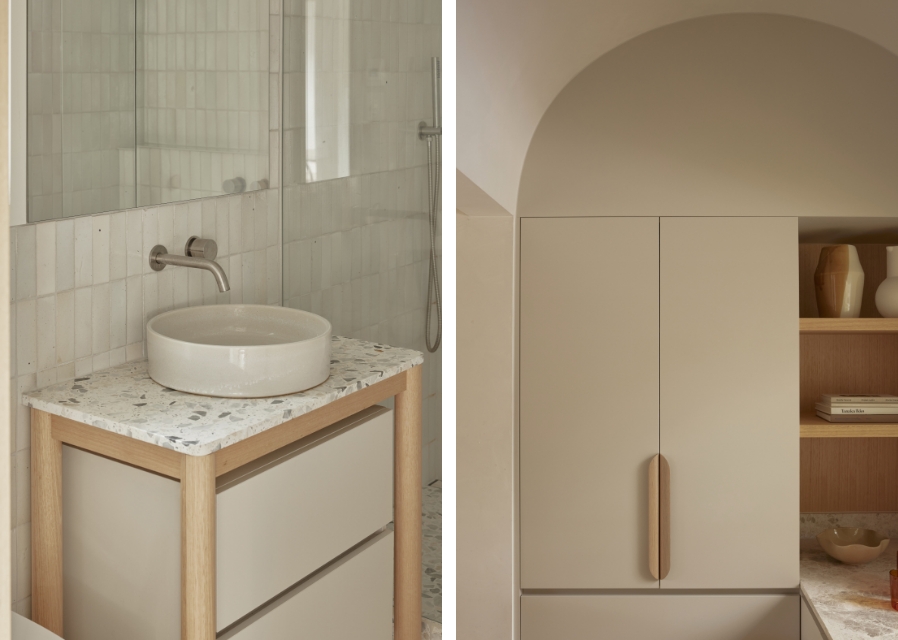

Cabinetry in the kitchen and bathroom (along with a desk and bedroom wardrobes) features Laminex Alpine Mist. “It fits somewhere between the sand and the weathered tea tree you’d find outside,” says Smith, “but like the sandy shore is the backdrop to the ocean, the sand-coloured finishes give the individual elements a sense of legibility within the home, [so too does the Laminex].” These tones are continued and carried through to the handmade tiles and terrazzo of the bathroom, creating a home that feels considered and complete.
“With a little bit of ingenuity, a compact space can be fulfilling and functional,” reflects Smith on the project. Unlike some of the homes down the street, Portsea Surf Shack demonstrates an ‘essential’ kind of living. Through careful use of materials and restrained interventions, the project almost represents an act of patronage, yet its simplicity and pragmatic approach to living means it will be able to be enjoyed as it should.
Learn more about the project here.
Design: Blair Smith Architecture Photography: Sean Fennessy


